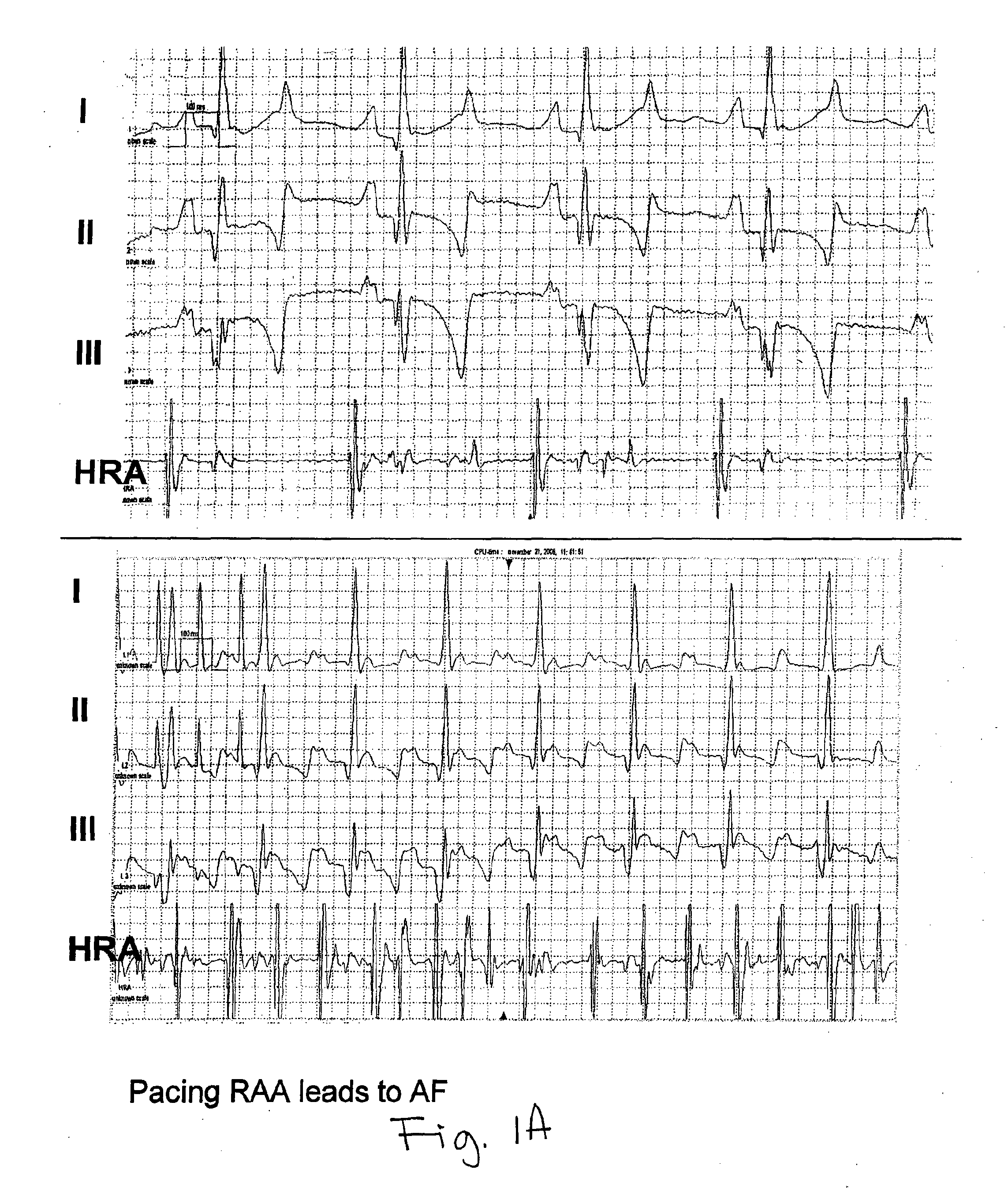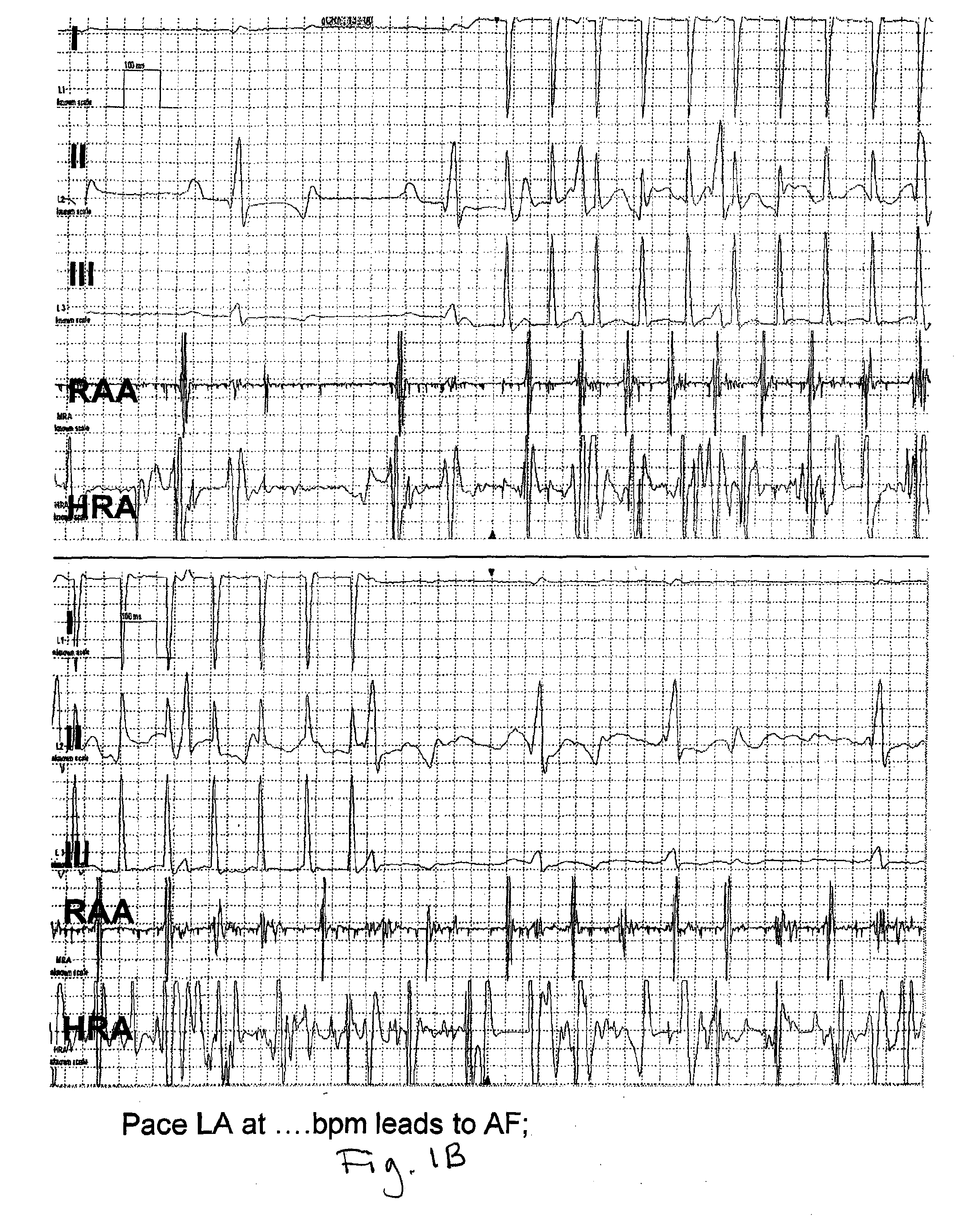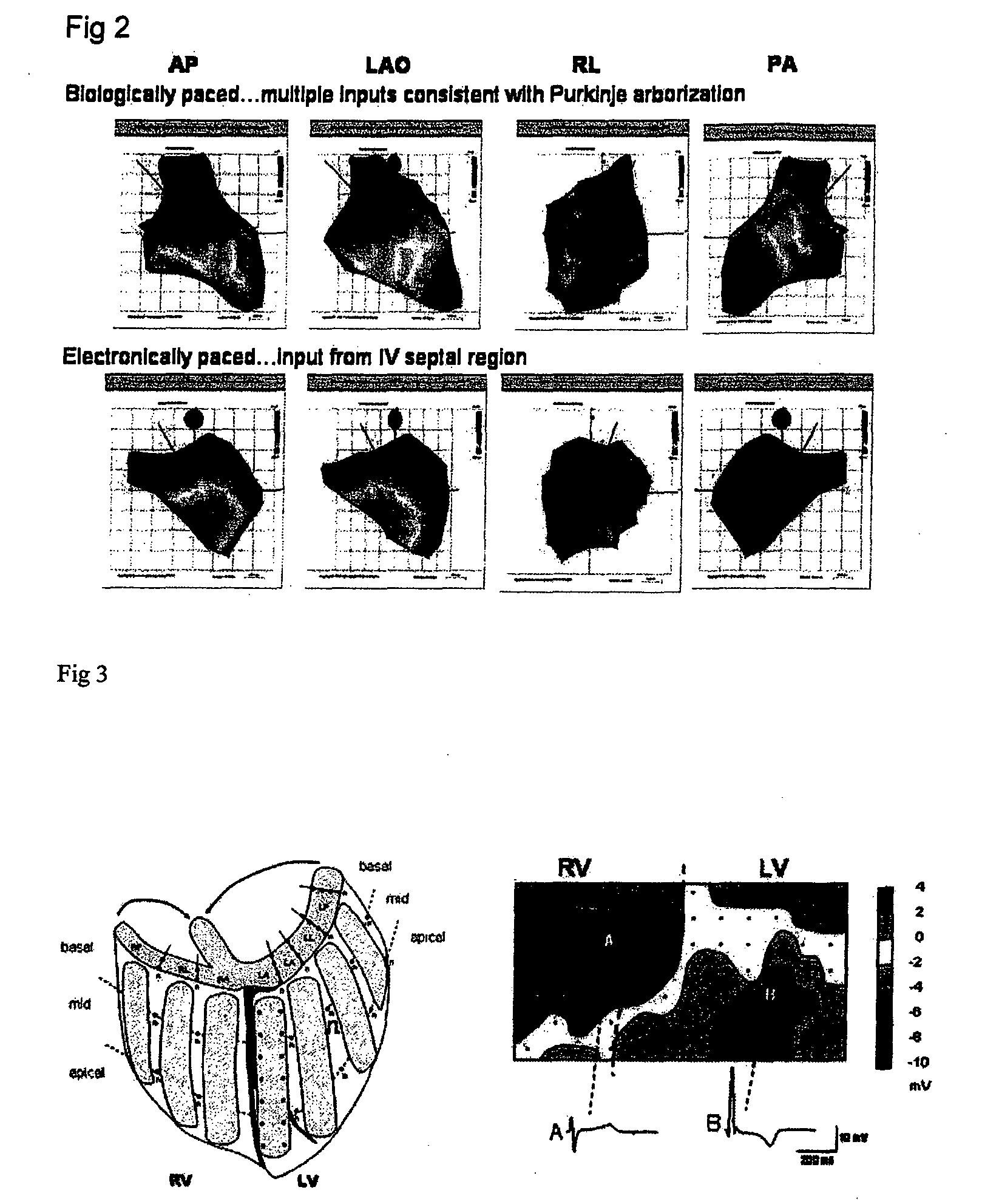Methods and compositions to treat arrhythmias
a technology of compositions and arrhythmias, applied in the direction of biocide, animal/human protein, genetic material ingredients, etc., can solve the problems of abnormal heartbeat, high arrhythmia, and abnormal rate or rhythm of electrical impulse initiation of the sinus node, so as to prolong the refractory period, slow down the deactivation kinetics, and slow down the effect of deactivation
- Summary
- Abstract
- Description
- Claims
- Application Information
AI Technical Summary
Benefits of technology
Problems solved by technology
Method used
Image
Examples
example 1
Gene and Cell Therapy can be Achieved—the Creation of a Biological Pacemaker
[0167]The use of the mHCN2 construct delivered in an adenovirus globally to the left atrium of the canine heart to create the first biological pacemaker based on a family member of the molecular correlate of the native “pacemaker current” If has been reported. The same construct was tested in a canine ventricular conducting system. In both cases biologic pacemaker activity was evident and in the case of the conducting system delivery, it was sufficient to generate physiologic rates. However adenoviral delivery is transient and within two weeks the biological pacemaking had disappeared. In order to gain greater persistence, a cellular platform for delivering the gene was tested. Previous work on human mesenchymal stem cells (hMSCs) had shown that they could be transfected by electroporation (Hamm, A., et al., (2002), Tissue Eng. 8, 235-245.) so viruses were not necessary. One additional advantage of this cell...
example 2
Animal Models
[0178]There are a variety of AF models, ranging from spontaneous, through atrial pacing-induced tachycardia models having variable degrees of ventricular failure (with rapid ventricular pacing increasing the extent of the failure), through valvular-insufficiency-induced (obtained by inducing mitral or tricuspid regurgitation) and atriotomy-induced (by lesioning the right atrial free wall and then pacing). Research has been performed on dogs, cats, goats and other animal models. More recently, AF has been induced in transgenic mice, as well.
[0179]Each model has specific advantages with regard to species, temporal evolution of AF and reproducibility of AF. Tachy-pacing-induced AF was generally popularized by Allessie et al in experiments in the goat (paralleled by Morillo's experiments in the dog). This work generated the hypothesis that atrial fibrillation begets atrial fibrillation, by showing that recurrences of the arrhythmia facilitated its further...
example 3
Myocardial Ischemia and Infarction
[0182]Wit and Janse described the characteristics desirable in animal models of ischemia and infarct induced arrhythmias as follows: First, they should occur in hearts with a healing or healed myocardial infarct, since this is the pathophysiologic setting of clinical arrhythmias; second, ventricular premature depolarizations, VT and VF should occur spontaneously and sometimes should cause death as they do in humans; third, these arrhythmias should be initiated by the triggers that incite them in humans, including spontaneous or stimulated ventricular premature depolarizations, stress, and / or other factors that may increase sympathetic discharge; fourth, with regard to ECG and response to programmed electrical stimulation the tachyarrhythmias in the animal should resemble those in the human; finally, reproducibility of the arrhythmias is needed if new interventions are to be evaluated. With regard to these criteria, a variety of occlusion / ischemia in...
PUM
| Property | Measurement | Unit |
|---|---|---|
| voltages | aaaaa | aaaaa |
| voltages | aaaaa | aaaaa |
| voltages | aaaaa | aaaaa |
Abstract
Description
Claims
Application Information
 Login to View More
Login to View More - R&D
- Intellectual Property
- Life Sciences
- Materials
- Tech Scout
- Unparalleled Data Quality
- Higher Quality Content
- 60% Fewer Hallucinations
Browse by: Latest US Patents, China's latest patents, Technical Efficacy Thesaurus, Application Domain, Technology Topic, Popular Technical Reports.
© 2025 PatSnap. All rights reserved.Legal|Privacy policy|Modern Slavery Act Transparency Statement|Sitemap|About US| Contact US: help@patsnap.com



